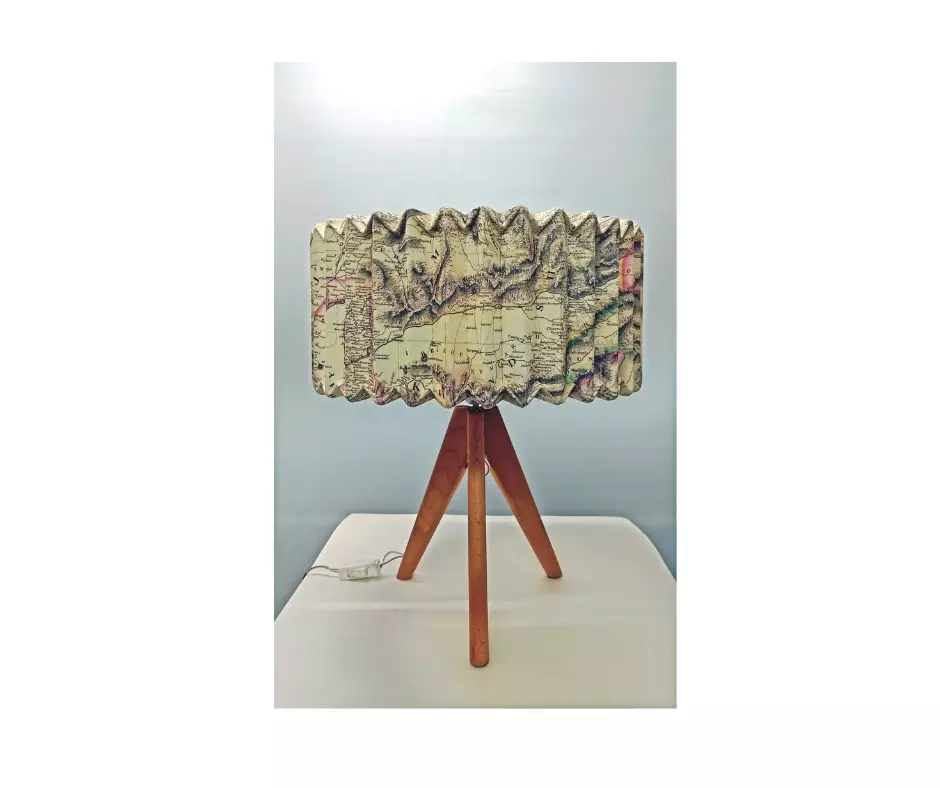Maps and mind-twisters
Ankon Mitra’s current exhibition illustrates the ubiquitous act of folding, seen in everything from the genome of an entity to the sculpting of topography and the gush of oceans

Folding is Ankon’s spiritual cord with the universe. One might wonder how the belief impacts his artistic process, particularly in the context of map-making and cartography. The answer is somewhere hidden in the bewilderment. For the artist, it processes in the cosmos: both the micro and macroscope reveal many axioms and realities. (Image by arrangement)
Paper folders are as critically all-embracing as their approaches to the art. For Ankon Mitra, architect, origami artist and designer, crimps, pleats and petal folds are just some of the ways to create different shapes.
He exemplifies his solo exhibit at Kalakriti Art Gallery, in what curator Prashant Lahoti calls, “An esoteric joining of the cartographic with the geometric.”
Titled Maps Unfolded, precision is key, whether Ankon is folding a humble crane or a complex modular structure with interlocking parts. So is enthusiasm. The maps featured in this arrangement include traces of traditional Indian pilgrimage, printed bazaar, and city — each offering a window into the bygone era.
Ankon compares the Miura Map Folding Algorithm to how nature works. The Miura fold solves the problem of maps tearing at their folds, making them stronger. Similarly, nature uses mathematical principles, like folding, to make things more efficient, using less material and energy to create stronger structures.
Folding is Ankon’s spiritual cord with the universe. One might wonder how the belief impacts his artistic process, particularly in the context of map-making and cartography. The answer is somewhere hidden in the bewilderment. “I count the pleats, just as a person chanting a prayer counts the beads of a rosary. Folding processes in the cosmos — both the micro and macroscope reveal many axioms and realities. For instance, the more we fold, the stronger we get. Mysteries lie in the fold and they have to be unfolded. A map holds within itself many truths, which are only revealed when it is completely unfolded. Maps tell stories of other places — where we have not yet been. They fire the imagination to travel to the unknown and explore new frontiers and horizons. This is the artist’s process as well — to constantly push boundaries and travel to strange places where new ideas and techniques can burst into bloom,” says the internationally known artist, with his work showcased in numerous countries including Venice, London, and Shanghai.
Elaborating on how Ankon neutralises the functional aspects of folding with his art’s aesthetic and conceptual elements, he reveals, “The functional, aesthetic and conceptual elements of folding are inseparable and integrated at all times. They are not isolated and separate things. A map too is geography, science, visual art and poetry all rolled into one. There are no artificial barriers between these definitions. A map (and folding), are both metaphors for life.”
As a trained architect, Ankon fell in love with the craft, seeing it as a perfect fusion of science, mathematics, the liberal and visual arts. “Architecture is made from an understanding of material science, as well as an understanding of human needs (physical, intellectual, emotional and spiritual). This learning from architectural training at the meeting of art and science has deeply influenced all the works that I have created over the last 17 years. In Maps Unfolded, the works are part game theory, part childhood memories, part metaphor and many parts functional, spatial and immersive,” he says, signing off.
The exhibition is on till October 5 at Kalakriti Art Gallery, Banjara Hills.
The exhibition is on till October 5 at Kalakriti Art Gallery, Banjara Hills.
( Source : Deccan Chronicle )
Next Story

